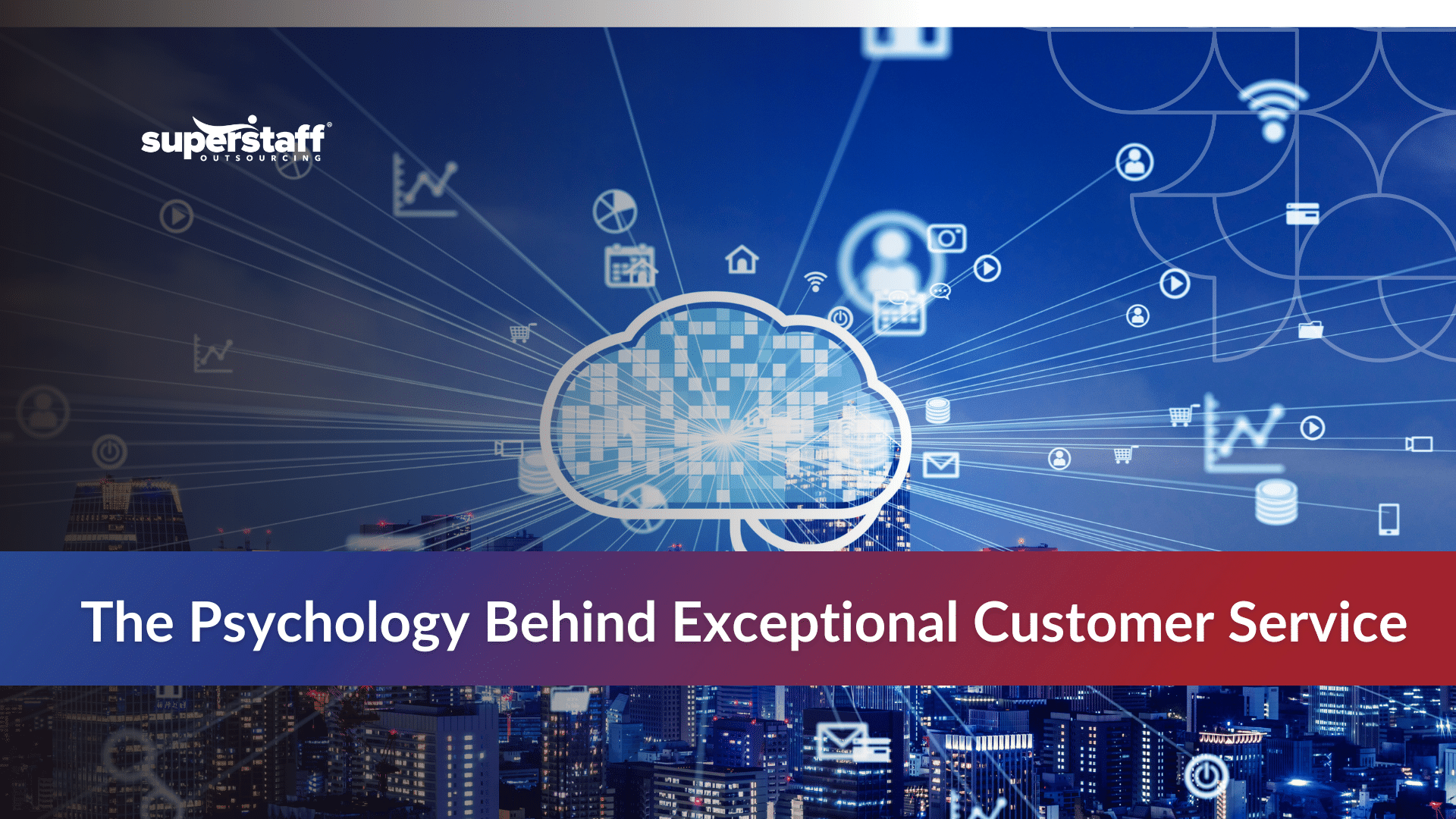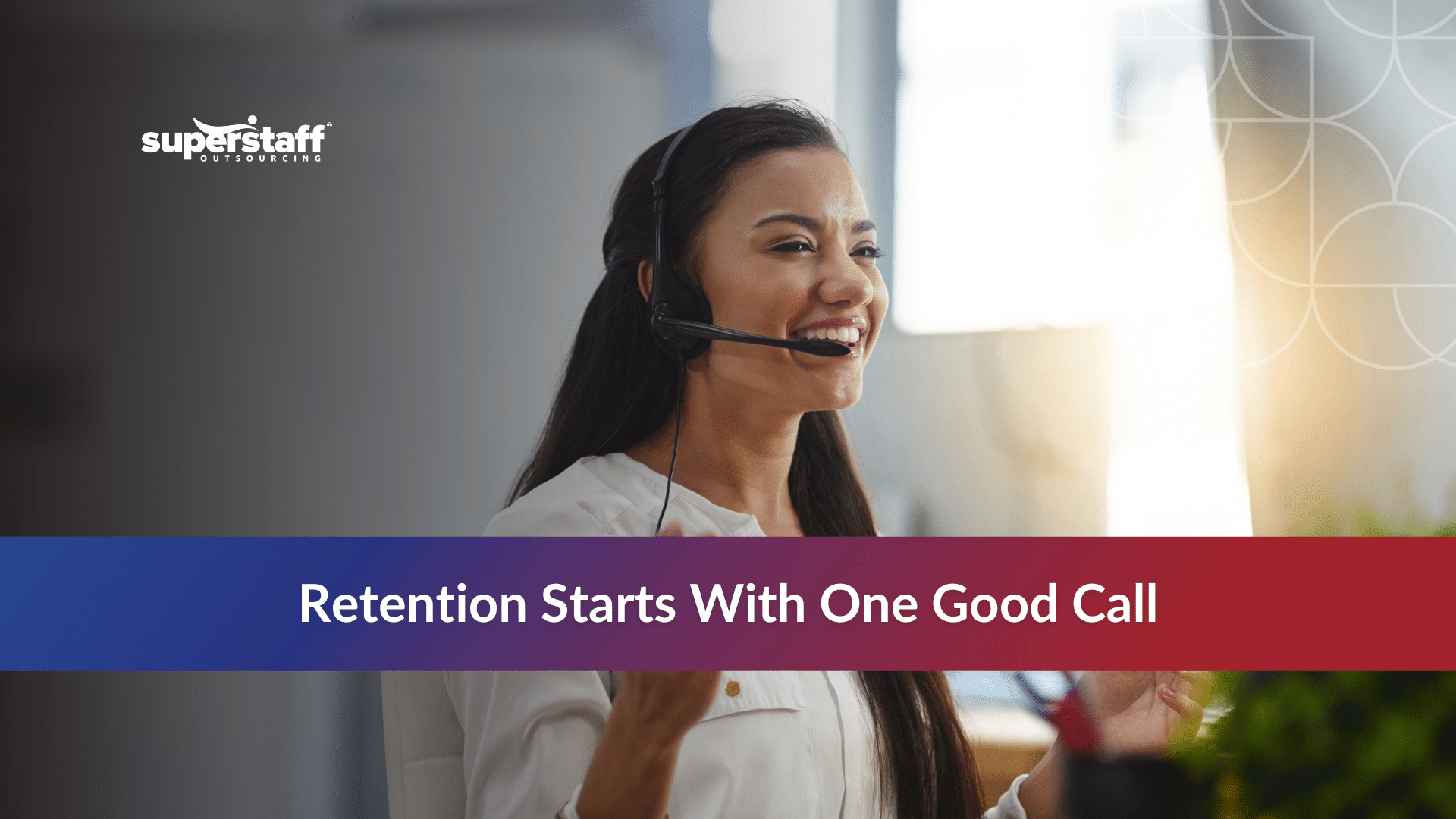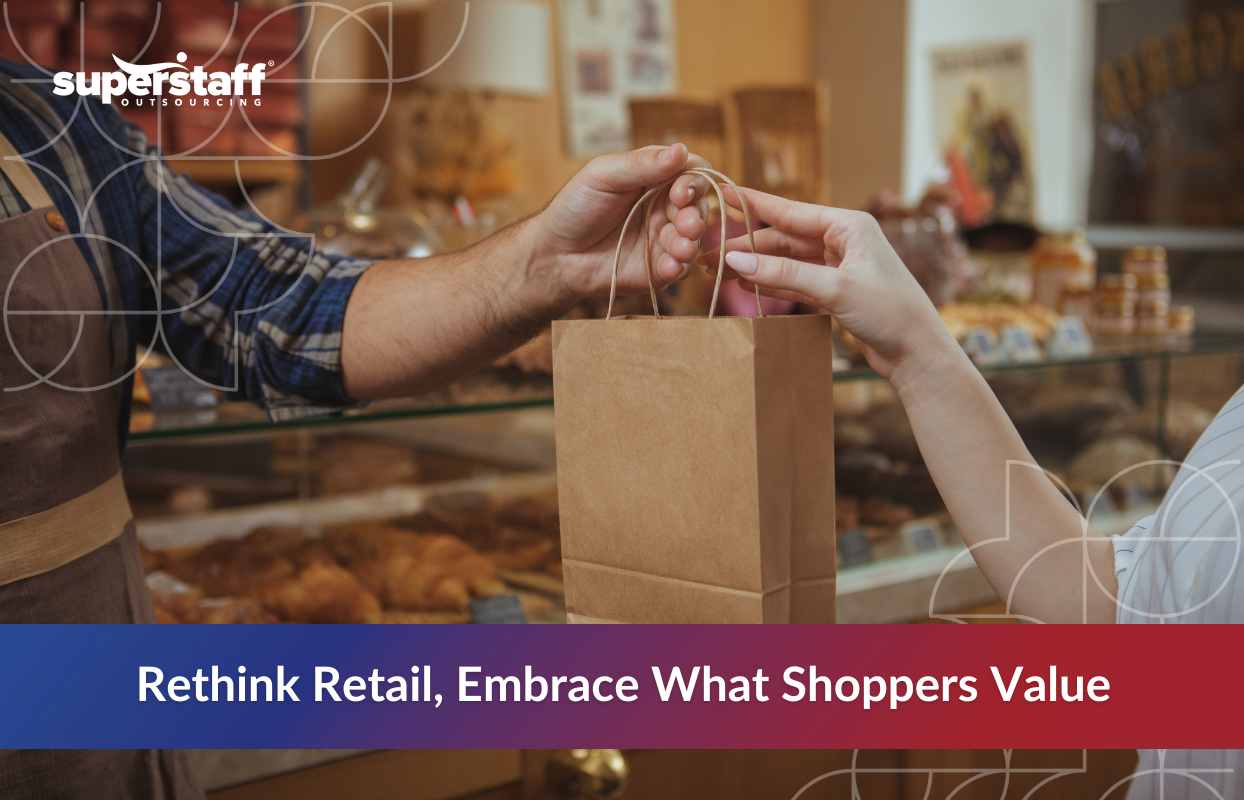
Consumers aren’t just shopping differently — they’re thinking differently.
In a post-pandemic world shaped by inflation, economic jitters, and digital overload, people are re-evaluating what matters. They’re ditching flashy brand names in favor of practical value, and this shift is reshaping retail industry trends 2025 from the ground up.
This blog unpacks how pragmatic consumerism is changing the game and what retail brands, especially e-commerce players, can do to keep up. From smarter product lines to streamlined customer service, we’ll explore how outsourcing is helping retailers thrive in this no-fluff economy.
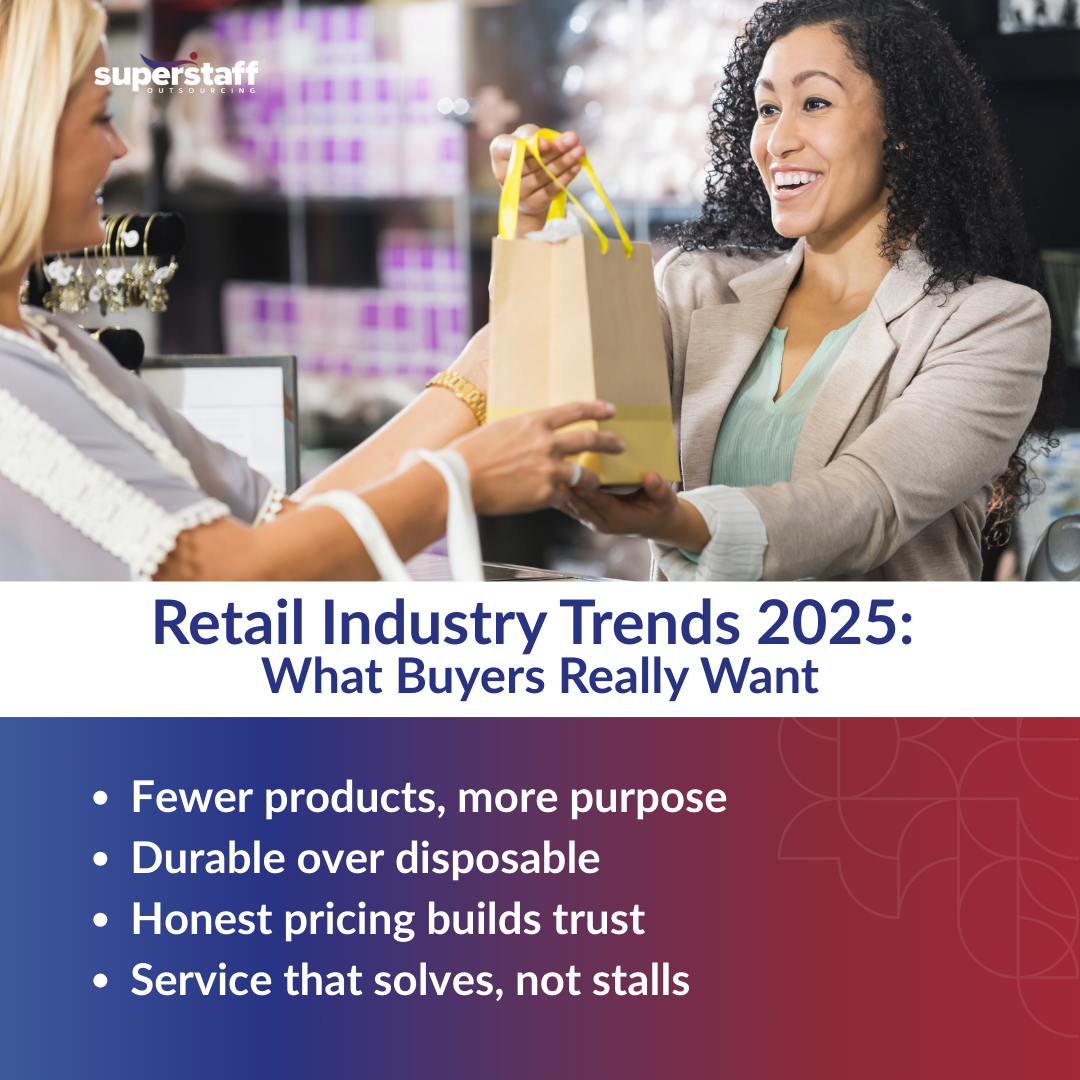
The Rise of the Value-First Shopper
Today’s consumers aren’t just watching prices, they’re watching purpose.
They want to know: Is this worth it? Will it last? Do I really need it? As a result, impulse buying is slowing down, and there’s a growing shift toward essentials, private labels, and brands that offer real bang for the buck.
Take a walk down the grocery aisle or scroll through any online store. Shoppers are grabbing store-brand paper towels, choosing sneakers they’ll actually wear, and skipping those one-use kitchen gadgets. The “just because” purchases of yesterday are now “do I really need this?” today.
Multipurpose products are winning big. A jacket that works across seasons, a bag that fits the laptop and the gym shoes — that kind of versatility signals smart value. Sustainability plays into it, too. Reusable, recyclable, repairable, all of it matters when money and conscience are both on the line.
And more than ever, consumers are responding to experiences that feel made for them. In fact, according to Gartner, 80% of shoppers are more likely to buy from brands that personalize interactions, reinforcing just how important relevance and trust have become in shaping buying decisions.
In short, shoppers are growing more intentional. And for retailers navigating retail industry trends 2025, that means shifting from hype to help.
From Shelf Space to Staying Power
Retailers are picking up on the shift and adapting their assortments accordingly.
Instead of flooding shelves and online catalogs with dozens of SKUs, brands are tightening their product lines and leading with what actually works. This move toward curated simplicity not only reduces inventory costs but also builds trust. Shoppers don’t want to scroll through hundreds of choices. They want confidence in a handful of solid ones.
Durability is becoming a headline. Instead of promising the “next big thing,” brands are highlighting what lasts. A well-made, well-priced product, with zero gimmicks, is far more appealing than the latest trend item destined for the donation pile in three months.
And let’s talk pricing transparency. Today’s consumer isn’t fooled by fake markdowns or bloated MSRPs. If the item costs more, they want to know why. Is it ethically made? Does it use better materials? The more upfront a brand is, the more loyalty it earns.
Interestingly, many retailers are still figuring out how to respond. According to Forbes, in the Asia-Pacific region alone, nearly half, 49%, are still exploring their long-term approach as they brace for 2025. That hesitation reflects just how disruptive these new buying habits have become.
But while product strategy is crucial, it’s only one part of the puzzle. The experience around the product, especially post-purchase, carries just as much weight.
No-Nonsense Experiences Win Loyalty
Here’s the truth: great customer service isn’t about grand gestures. It’s about getting the basics right — consistently.
Modern shoppers expect real-time help, fast solutions, and zero friction. They don’t want to call three times to return a pair of shoes. They want an easy process, a human to talk to when needed, and a brand that doesn’t make them work for answers.
Returns? Make them painless. People are more likely to buy when they know they can change their mind without jumping through hoops. No hidden fees. No complicated forms. Inventory visibility? Keep it accurate. There’s nothing more frustrating than seeing an item marked “available” and getting a backorder email five minutes later.
Live chat support? Yes, but only if it actually helps. Bots are fine for basic questions, but when shoppers need real guidance — or just a little empathy — they want to talk to someone who gets it.
And here’s where outsourcing steps into the spotlight.
How Outsourcing Meets the Moment
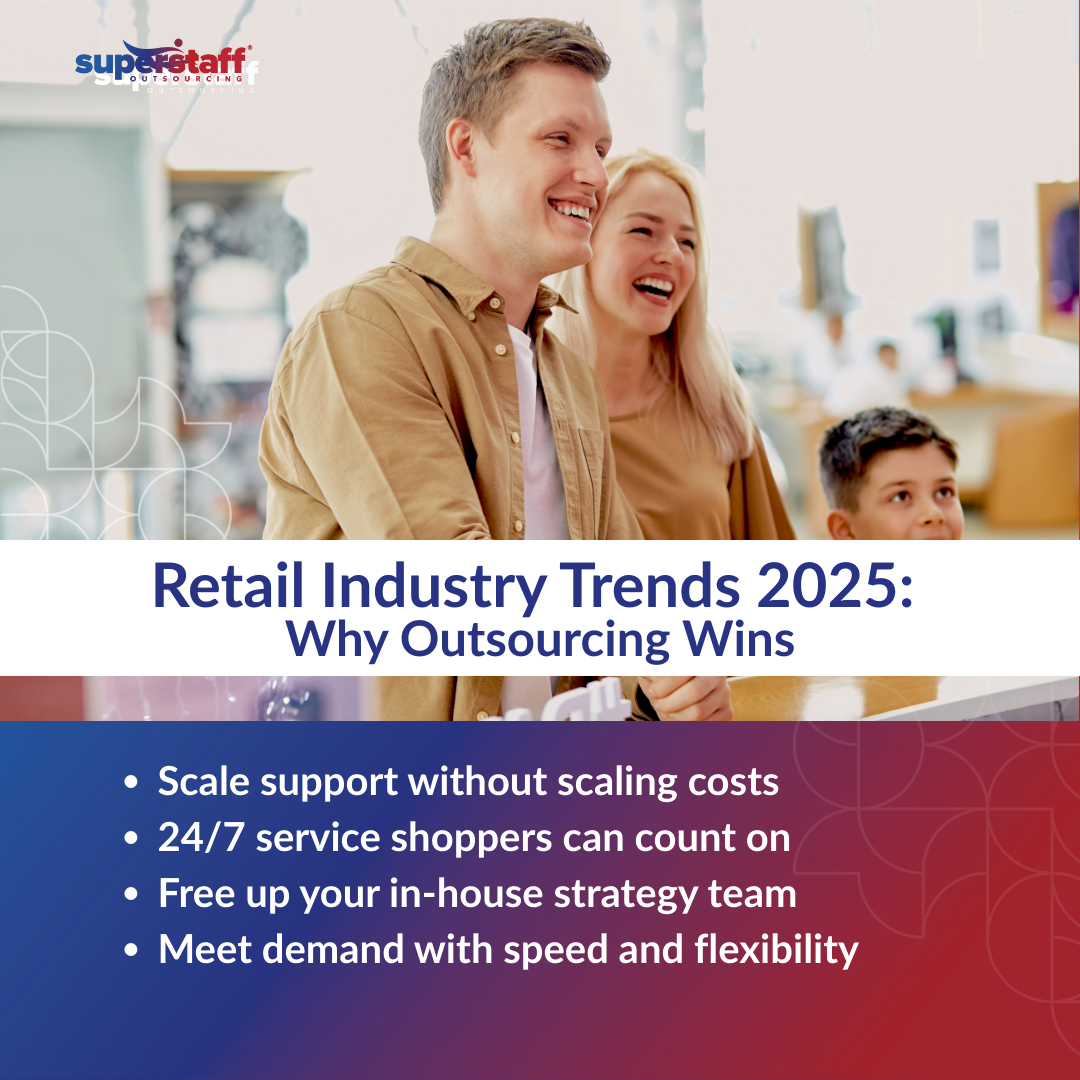
Let’s face it — delivering that kind of seamless experience takes time, tech, and talent. And for most retailers, especially small to mid-sized ones, staffing a full in-house service team isn’t always realistic.
That’s why outsourcing is becoming a smart, strategic move.
By partnering with offshore and nearshore teams, retail brands can scale their operations without scaling their overhead. Need 24/7 chat support? No problem. Need seasonal help for post-holiday returns? Easy. Need product data cleaned up across channels? Handled.
Outsourced CX teams can manage live chat, email, phone, and even social support — all while aligning with your brand tone and policies. These aren’t just call centers anymore. They’re highly trained extensions of your business.
And it’s not just about front-end service. Back-office outsourcing handles the critical tasks that often go unnoticed: return processing, refund verification, logistics updates, inventory tagging, catalog maintenance — you name it.
In the new world of omnichannel retail strategies, where customers might switch between mobile, desktop, and store within a single buying cycle, you need systems (and people) that can move just as fast.
Outsourcing helps make that happen reliably, and without blowing the budget.
Leaner, Smarter, More Human
Now, let’s address the elephant in the room: some leaders still hesitate to outsource because they fear losing control or authenticity.
But when done right, outsourcing doesn’t dilute your brand — it sharpens it.
Your in-house team should be focused on big-picture strategy: brand growth, product development, partnerships, and innovation. That’s where they shine. Letting a skilled outsourcing partner handle high-volume support or routine back-office tasks gives your internal talent the space they need to move the business forward.
And yes, empathy still matters. A lot. The best outsourcing teams don’t sound robotic. They’re trained in your brand voice, coached on your values, and committed to delivering a top-notch customer experience in modern retail. With the right onboarding, they become as brand-loyal as your in-house team, just working from halfway around the world.
The result? A retail operation that’s leaner, smarter, and more responsive — one that can keep up with today’s consumer without losing its soul.
Why It All Comes Down to Trust
Understanding how consumer behavior is changing the retail industry in 2025 is really about one thing: trust.
Buyers are more cautious, more informed, and less patient with brands that overpromise and underdeliver. They crave clarity. They respect honesty. And they reward consistency — even if the flash is gone.
Retailers who respond with smarter assortments, straightforward service, and scalable support will stand out, not by shouting louder, but by showing up better.
This isn’t just a trend. It’s a turning point.
And it’s one that favors brands willing to align operations with the grounded, get-real values of today’s shopper.
The Future of Retail Industry Trends 2025 Starts Here
The future of retail industry trends 2025 won’t be shaped by flash sales or viral campaigns. It will be led by brands that prioritize value, responsiveness, and operational excellence.
Shoppers are telling us what they want: simpler choices, better support, honest value. The retailers that listen — and adapt — will win both trust and loyalty in this new era of practical consumerism.
SuperStaff helps forward-thinking brands rise to the occasion. Our outsourcing solutions are tailor-made for the modern retail landscape, from live chat and email support to back-office services like returns processing and inventory updates. With a flexible team of skilled professionals and a deep understanding of what shoppers expect, we help you stay relevant, responsive, and ready for whatever’s next.
Let’s build your brand’s next chapter — one clear, practical step at a time.

